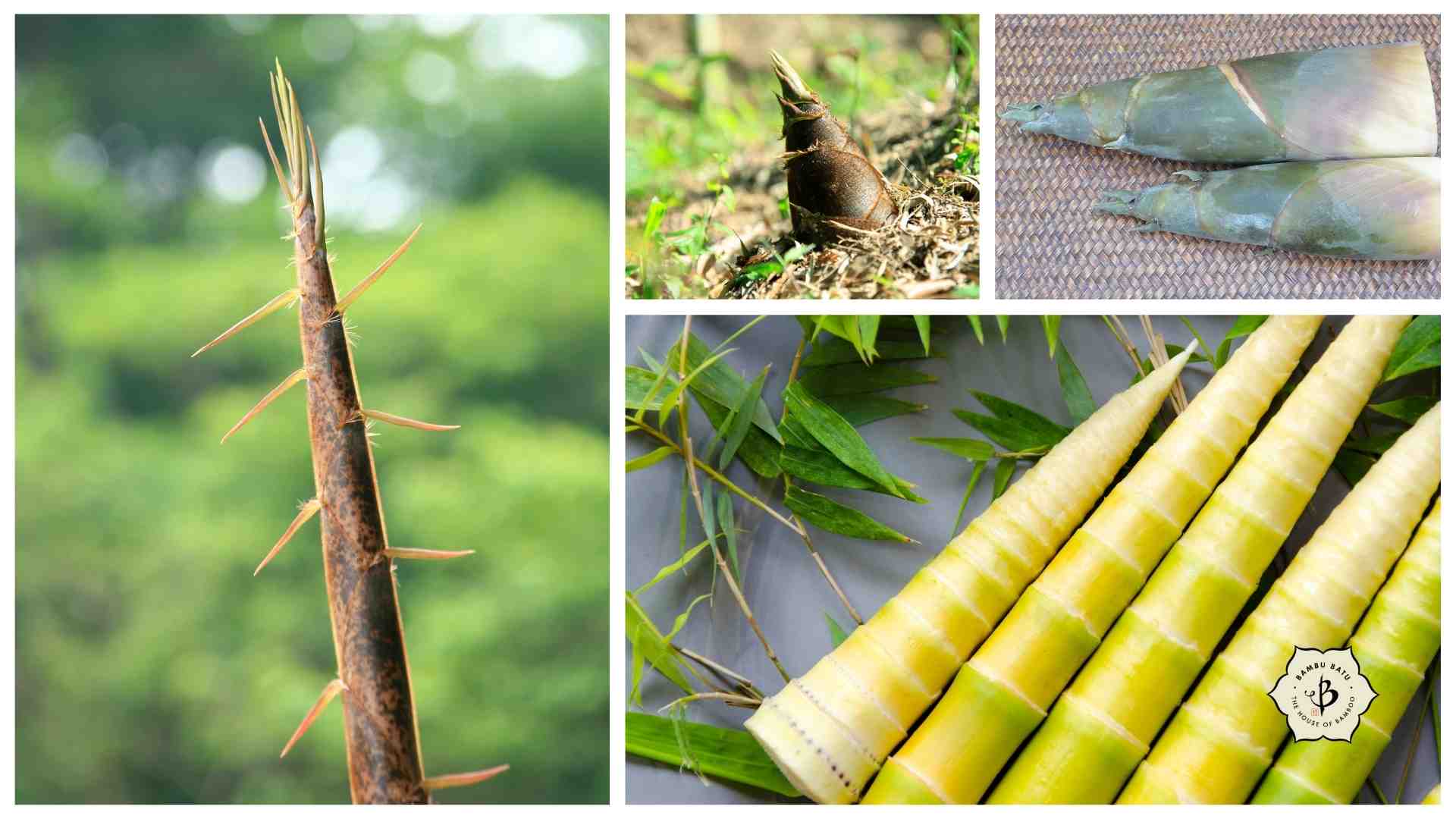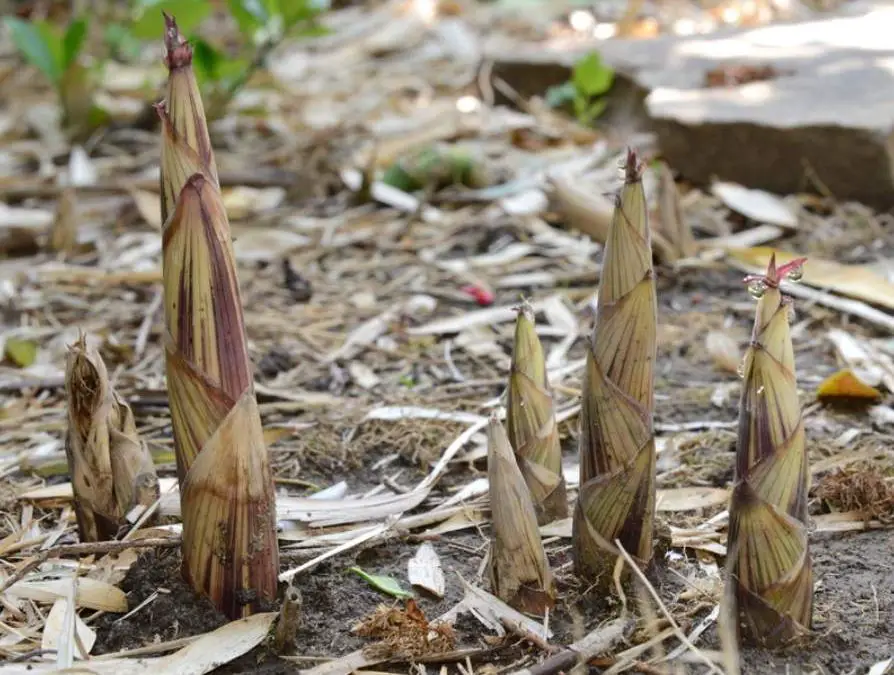If you’re a fan of Far Eastern cuisine, you’ve probably come across a dish or two that included some sliced bamboo shoots. And you lived to tell about it. Bamboo shoots are a common accent that pack a little extra nutrition and a whole lot of crunch. And most of the time, they’re perfectly safe to eat. But what about the rest of the time? Can bamboo shoots be poisonous?
There’s nothing dangerous about eating bamboo shoots, as long as they’ve been properly prepared. However, raw bamboo shoots do contain cyanogenic glycocides which can be poisonous in large quantities. The best way to remove these toxins is to boil or ferment the bamboo. Also, some species of bamboo have better tasting shoots, while others have higher levels of toxicity. So it’s better to stick with the more commonly eaten varieties.
Poisonous toxins in bamboo shoots
In Asia, where the woody grasses are most prolific, people have been eating bamboo shoots for centuries, probably millennia. But like a lot of foods that nature provides, you can’t just eat it straight out of the earth.
Raw bamboo contains natural toxins, cyanogenic glycocides, specifically taxiphyllin. Different species of bamboo contain different quantities, but if you eat enough of it, it can be deadly. And in most cases, these toxins are likely to cause severe sickness and discomfort.
The good news is that these toxins can be easily removed by boiling the bamboo shoots. An alternative method is to ferment the bamboo. Pickling can also be effective, if done correctly, but beware of those who have attempted to pickle their bamboo unsuccessfully, with fatal consequences.
Bamboo and pets
What if your dog or cat digs up some bamboo and eats it? Fortunately, bamboo is not poisonous to pets, so there’s no need to worry. It’s actually a good source of protein. It could be dangerous, however, if you use a chemical fertilizer on your bamboo. These heavy chemicals get into the tissue of the plants and are not healthy for consumption. For this and other reasons, we recommend organic fertilizers on your bamboo.
Fresh bamboo
When people talk about eating fresh bamboo, that’s not the same as raw bamboo. Raw bamboo can be dangerous or deadly to eat, because of the toxins. Fresh bamboo simply means that it hasn’t been dried like jerky, nor canned or jarred for longer storage.
Safe, traditional preparation of bamboo shoots
The simplest thing to do is to boil your bamboo shoots. Begin by removing the outer couple layers, which you can easily peel off. Then rinse the shoots just to make sure you got all the dirt off. Place the clean shoots in a pot of water and bring it to a boil. Once the water is boiling, you can reduce it to a simmer and let the bamboo cook for 30 to 60 minutes. It’s a good idea to boil them for 20 or 30 minutes, then change the water, rinse the bamboo, and boil again.
To see if they’re done, poke the bamboo with a skewer, and it should run through without difficulty. As it cooks, the bamboo’s texture softens. It’s similar to the change of a raw potato to a boiled potato. This process removes the bitterness from the flavor, as well as the natural toxicity, which are related.
Another easy method is to pickle your bamboo shoots. To pickle them, simply place your clean bamboo shoots into jars and submerge them in a brine, consisting of 1:1 vinegar and purified water. You can use whole or sliced shoots, depending on their size and your preference. Add garlic or herbs for flavor, and store the jars in a fridge for two to three weeks.
However, there have been incidents of bamboo pickling that went horribly wrong. So be very careful with this method. Be sure to use enough vinegar, and do not rush the timetable.
A more effective and reliable preparation is to ferment your bamboo shoots. Lacto-fermentation is a more involved process, but it doesn’t take any longer than proper pickling. Some people actually use the terms interchangeably. But with fermentation, you add salt, which gets broken down by beneficial bacteria to create a healthy, probiotic delicacy. Check out this article on fermentation to learn more.

Best bamboo species for culinary consumption
With proper preparation, you can eat most kinds of bamboo. But they don’t all taste the same, and some are definitely yummier than others.
There are at least 100 different species that bamboo experts consider edible. And the bigger the bamboo the bigger the meal, so we recommend planting a good-sized timber bamboo. The following short list includes about dozen edible species which are also commonly grown as ornamentals.
Tropical and subtropical bamboo
If you prefer clumping bamboo, these are some popular varieties that can satisfy your appetite without overtaking your garden.
- Bambusa oldhamii: Also called Giant timber bamboo, this is probably the most widely grown species of bamboo in the United States. Although it’s native to more tropical and sub-tropical climates, it actually grows well in temperate climates, too, cold hardy down to about 20º F. Under ideal conditions, this timber bamboo can grow 60 or 70 feet tall with smooth, waxy culms up to 4 inches in diameter. In cooler climates, it won’t get quite is big, but it will still make an impressive addition to the garden. It’s also nice to know that oldhamii is a clumper, so you won’t need to worry about the invasive rhizome roots taking over your yard.
- Bambusa malingensis: Often called Seabreeze, this is another clumping bamboo native to sub-tropical China. As the name implies, this is a great species for growing in coastal areas like Florida and California. But it also grows well inland, so long as it stays above 20º F. Although it’s clumper, it grows quickly and makes a good privacy screen. Tightly clumping, dark green culms grow about 40 feet tall and about 2-2.5 inches in diameter.
- Bambusa textilis gracilis: Commonly known as Graceful bamboo, this is another one of the most popular species of bamboo, especially for privacy screens. The shoots grow tall, upright and elegant, as the name would suggest, producing a wonderful canopy of foliage. Again, like all members of the genus Bambusa, this is a tropical, clumping species. It prefers warmer climates but can handle winter temperatures down to about 20º F. Under ideal conditions it can get about 30 tall, with poles just over an inch thick.
- Dendrocalamus hamiltonii var. edulis: This South Asian bamboo can grow to 50 or 60 feet tall, in tight clumps, with culms up to 5 or 6 inches thick. Zigzag culms are dull, dark green, with a profusion of long branches. Shoots are among the best tasting of any species.
Temperate bamboo varieties
These are just a few of the most popular running bamboos to grow for edible shoots.
- Chimonobambusa quadrangularis: Better known as square bamboo, due to the 4-sided shape of its culms, this exotic variety can also provide a square meal! This running bamboo comes from Chinese and has a very distinctive appeal, to both the eye and the palate. The plant can grow 10-20 feet high with culm about 1.5 inches thick. Walking Stick Bamboo, a close relative in the same genus, is also said to be delicious, as well as being very attractive as an ornamental.
- Phyllostachys edulis: Also called Moso Bamboo, this giant timber variety is indigenous to China and Taiwan, and is also the most widely used for bamboo textiles. In their native habitat, mature stalks can grow nearly 100 feet tall and get to be several inches in diameter. Moso bamboo is the most common source of edible shoots in the US. Fresh shoots from a well-established grove can weigh more than 5 pounds. Depending what time of year it’s harvested, it may be dried or eaten fresh. This species grows better in the southeast and is not recommended west of the Mississippi.
- Phyllostachys bambusoides: A large timber bamboo from Japan, whose shoots are eaten either fresh or dried. Japanese timber bamboo, or Madake, as it’s sometimes called, can grow more than 50 feet tall in ideal conditions, with culms up to 5 inches thick. It can tolerate temperatures as low as -5º F, but in colder climates it won’t grow as big.
- Phyllostachys aureosulcata: Widely grown as an ornamental, this species, known as Yellow groove bamboo, has a distinctive yellow stripe that runs along the culm grooves. Poles can grow up to 30-40 feet tall and 1.5-2 inches in diameter. The fresh shoots are quite tasty, without the bitter flavor, and can even be eaten raw. Like all members of the genus Phyllostachys, this is a runner, and a particularly vigorous one, so be careful where you plant it.
- Phyllostachys nigra ‘Henon’: Giant gray is a special cultivar of black bamboo that grows considerably larger than the standard P. nigra species. Shoots emerge dark green and slowly turn a dusty gray color, unusually attractive. Mature poles can get 60 feet tall and 4-5 inches in diameter, producing some generously sized and delicious shoots. An excellent bamboo for both beauty and utility.
- Phyllostachys nuda: This is an especially cold-hardy and fast-growing species with deep green culms and lush foliage. Canes can grow 30-40 feet tall and 1.5-2 inches in diameter. Cold hardy down to -10º F.
Bamboo shoots in Latin America
Neotropical bamboos, those from South and Central America, are not considered edible. The custom of eating bamboo shoots is common in Asia, but not so much in Latin America.
Further reading
If you enjoyed reading about the culinary potential of bamboo shoots, you may might also want to peruse some of our other popular articles.
FEATURED IMAGE: Colorful, young bamboo shoots, probably Phyllostachys aureosulcata.


























I used a bamboo stick to stake up a sprawling rubber tree. The rubber tree died shortly afterward. Was there something in the bamboo that killed my plant?
Any bamboo poles you buy in a store are almost certainly treated with borax (or boric acid), to prevent weathering, mold, pests, etc. But bamboo poles are very commonly used to stake plants, and I’ve never heard of this happening. So I’d have to assume that it was an unfortunate coincidence.